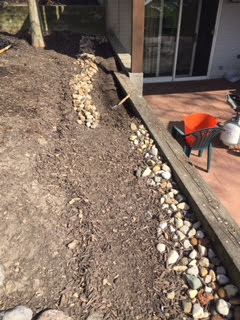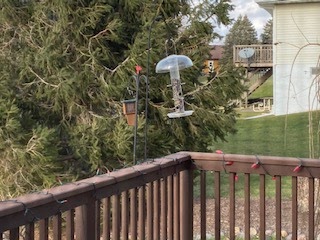French drain one way to keep floor dry
After we built our house in 1993 we started to get water in the lower level.
Our house is located at the bottom of a hill. We had very heavy rains in the 1990s, and the water would rush down the concrete roadway, into our yard, end up on our patio and pass into the house via the patio doors. We tried a number of "fixes," and finally had a few dry years in a row. We felt safe enough to finish this part of the house with carpeting, and built a rec room, bath and guest room.
The concrete patio block started to slope more sharply into the house and the carpeting kept getting somewhat wet. We finally changed that patio block three years ago. We also explored other ways to keep the floors dry.
While searching on YouTube, we discovered "French drains." This seemed to be a good approach, so we bought the inexpensive items needed and installed the drain above the new patio.
I want to endorse this as one way to address water issues in a cost-efficient manner. It's pretty easy to do, too.
Attached to this blog are pictures of our drain: I clean the drain every spring because in the wintertime, we feed wild birds and the seed gums up the area.
We dug a trench, put in a rubber tube with holes, used clean gravel and landscape fabric. One photo shows how the tube drains into a rock garden; I built that last year and planted succulents.
The French drain, a new patio design that slopes away from the house, and landscaping that also slopes away, has all helped to fix the water problems of the past.
If you have similar water problems, it might help you, too. Search "French drain," online and you'll quickly find how to build it; or you might prefer to find a video on YouTube. There's also a good explanation I found on HG-TV, (HGTV.com)
Our house is located at the bottom of a hill. We had very heavy rains in the 1990s, and the water would rush down the concrete roadway, into our yard, end up on our patio and pass into the house via the patio doors. We tried a number of "fixes," and finally had a few dry years in a row. We felt safe enough to finish this part of the house with carpeting, and built a rec room, bath and guest room.
The concrete patio block started to slope more sharply into the house and the carpeting kept getting somewhat wet. We finally changed that patio block three years ago. We also explored other ways to keep the floors dry.
While searching on YouTube, we discovered "French drains." This seemed to be a good approach, so we bought the inexpensive items needed and installed the drain above the new patio.
I want to endorse this as one way to address water issues in a cost-efficient manner. It's pretty easy to do, too.
Attached to this blog are pictures of our drain: I clean the drain every spring because in the wintertime, we feed wild birds and the seed gums up the area.
We dug a trench, put in a rubber tube with holes, used clean gravel and landscape fabric. One photo shows how the tube drains into a rock garden; I built that last year and planted succulents.
The French drain, a new patio design that slopes away from the house, and landscaping that also slopes away, has all helped to fix the water problems of the past.
If you have similar water problems, it might help you, too. Search "French drain," online and you'll quickly find how to build it; or you might prefer to find a video on YouTube. There's also a good explanation I found on HG-TV, (HGTV.com)






Comments
Post a Comment